- Share full article
Advertisement
Supported by

Welcome to Estonia’s Isle of Women
What would life be like without men? On this tiny Baltic island, it’s business as usual. But its colorful, folkloric way of life is threatened by a dwindling population.

By Hillary Richard
In the Kihnu Museum on a tiny Estonian island, the elders, dressed in matching striped skirts, pondered a favorite question over coffee. What hasn’t a Kihnu woman done? They kept a running list of all of the necessary jobs they remember Kihnu women doing in the absence of men, from fixing tractor engines to performing church services when the Russian Orthodox priest wasn’t available. So far, there has been only one job no one can claim.
“Digging a grave,” Maie Aav, the museum director, said, “but even that is questionable.” Like the elders, Ms. Aav, who is in her mid-40s, was also wearing a traditional skirt (called a kort), but hers had a slight color variation to represent her younger age.
Visitors to this peaceful isle in the Baltic Sea are struck by its windswept beaches surrounding pristine forests and the occasional brightly colored farmhouse. At nearly seven square miles, Kihnu is the seventh largest of Estonia’s more than 2,000 islands.
Many Estonian islands have remained unspoiled and untouched since they were last inhabited centuries ago. In contrast, Kihnu stands out precisely because of its inhabitants. The island is known for its abundance of women.

Gulf of Finland
Munalaid port
Street data from OpenStreetMap
Men began to fade from everyday life on Kihnu in the 19th century, thanks to their jobs at sea. Fishing and hunting seals took them away from home for months at a time. In response, Kihnu women stepped in and ran the island. Otherwise traditional female roles expanded to include anything their society needed to thrive and function. Eventually, this became ingrained in Kihnu heritage, as Unesco noted when it inscribed aspects of the culture on its Representative List of the Intangible Cultural Heritage of Humanity in 2008.
But tiny, traditional Kihnu has a growing modern problem. The population is shrinking as islanders move away because of a lack of jobs.
On top of that, changes in the fishing industry are bringing a new stress: the men are coming home for longer periods of time. Some have even stayed.
“We will have to commercialize eventually, but the question is which way is best for us,” said Mare Matas, the president of the Kihnu Cultural Space Foundation , which is dedicated to promoting and protecting the islanders’ history and traditions through events, festivals and educational initiatives.
Like many Kihnu women, Ms. Matas is a multitasking dynamo who is fiercely passionate about preserving her heritage. In addition to managing several homestays on the island (including one at her own home), she is also the current lighthouse keeper and an island tour guide.
Her yellow house near the coast was a flurry of activity on the March afternoon I arrived by ferry from Munalaid Port, a harbor outside of Parnu, Estonia’s fourth largest city, roughly 27 miles away. Her oldest daughter, Liis, then 18, was home from the mainland, where she lives during the week while she attends high school in Parnu. (There is no high school on Kihnu.) Anni, 12, and Maria, 9, were rushing to get ready for the school talent show that evening. (Her son, Martin, 21, attends college in Tallinn, Estonia’s capital, about 110 miles away.) Like their mother, they all have flaxen blond hair and piercing cornflower blue eyes.
At first glance, the petite, 43-year-old mother of four would fit in anywhere with her sleek, chin-length bob, trendy black glasses and delicate gold hoop earrings. However, her closet is full of an everyday uniform of sorts: hand-woven skirts and custom paisley aprons.
An apron worn over a Kihnu skirt signifies a married woman. Ms. Matas’s husband, a fisherman, was away at sea.
When asked how many of the island’s estimated 300 year-round residents are men, Ms. Matas paused to count in her head.
“Maybe five,” she offered. During my visit, I encountered only two, a visiting documentary filmmaker and a builder fixing a house.
Ms. Matas poured a can of A. Le Coq beer, a local favorite, into two dainty glasses. She handed one to me across the floral-patterned kitchen tablecloth and sipped the other while she cooked.
The four-room house bursts with cheerful colors and textures, her remedy for the half-year gloom of Baltic winters. The door frames, windows and sideboard are painted a sunny yellow, occasionally with blue or red trim. The kitchen tablecloth is bright red with a large yellow and white floral pattern. Ms. Matas’ hand-woven blankets (all Kihnu women learn to weave traditional handicrafts) cover the red sofa and armchair with Kihnu’s signature pattern of navy, red, white, yellow and pink stripes.
Treasured photographs and her children’s artworks brighten the dark wood of the living room walls. In one framed picture, Ms. Matas posed with a group of women alongside Juri Ratas, the country’s prime minister. During his 2017 visit, Ms. Matas drove Mr. Ratas around in her vintage Soviet motorcycle’s sidecar. (Estonia was under Soviet occupation for roughly 50 years until its independence in 1991. Shortly afterward, leftover Soviet motorcycles became Kihnu’s main motorized transportation.) Mr. Ratas’s security detail, after losing track of the prime minister and Ms. Matas on Kihnu’s unmarked and rugged roads, tried (unsuccessfully) to forbid him from riding with her anymore.
“They were upset that I don’t have a motorcycle license,” Ms. Matas chuckled with a gleeful shrug. “Like that matters here.”
Kihnu society functions as a large, tight-knit family — and with that comes all of the typical big family behavior. At the school talent show, knowing looks volleyed from blond head to blond head as the women scooted their chairs closer to friends to gossip in low voices or exchange pleasantries in louder ones. A toddler roamed around the schoolhouse gym freely, picked up and cuddled by unrelated women.
There is a clear hierarchy in Kihnu: children, community and, lastly, men.
“We have totally different mentalities than people on the mainland. Kihnu women always want to do what is best for the family, especially the children,” Ms. Aav told me during a visit to the Kihnu Museum , which displays the history and culture of the island and its important artifacts.
The island is not for everyone — nor do the women want everyone to visit. Kihnu women are known for their candor, and the island is not for the easily offended.
“Mass tourism is not good for Kihnu,” Ms. Aav said. “We want cultural tourism, people who are really interested in our culture, our lifestyle, how we are living. If they’re interested, they’re welcome, but they must accept it.”
In fact, Kihnu’s charm is that it is in no way set up for mass tourism. A large tree branch propped against a house’s front door means nobody’s home. The only street signs are for the island’s four villages: Lemsi, Linakula, Rootsikula and Saare.
There are no lines on the road — and very few paved roads to paint a line on. There are no chains and no commercialization. There is no A.T.M., no restaurant open year-round, and the first police station is currently under construction. Here, visitors are guests, not tourists. I stayed in Ms. Matas’s homestead property and was quickly incorporated into her daily life, including meals, chores and island events.
“How do you welcome in the modern world, but keep this ancient culture alive? They’re in this limbo state of trying to find the balance,” Silvia Soide, a folk dance teacher and photographer, said. Ms. Soide moved from Vancouver to Kihnu in December 2008 in honor of her Estonian grandmother who fled the island during World War II.
“The older generation wants to keep the traditions and culture alive so they’re teaching what they were taught. It should stay alive, it’s a beautiful culture but I know that younger people feel frustrated. They’re welcoming in the outside world because it offers them a way of survival. It’s a really great opportunity for Kihnu women to earn money during the tourism season,” said Ms. Soide, imagining jobs such as cooking, innkeeping, sales and waitressing.
Kihnu can feel much larger than its four-mile length and two-mile width, as I found out on a walk to the rocky coast and back one morning. The only signs of life I encountered were a hound dog, fast asleep on a sun-warmed road, and a curious seal bobbing in the waves off the jagged coast. I turned off the beach down one of the many unmarked sandy roads that cut through the towering forests. Behind me, waves from the Gulf of Riga crashed against rocks. An occasional tree branch creaked or snapped in the wind. The forest grew wild, allowed to do what nature intended it to.
I thought of the way Ms. Soide described the island. “Everybody from Kihnu really loves Kihnu. It grows roots around your feet.” The forest had a fairy-tale quality that made this seem plausible.
At home, Ms. Matas heated up her sauna cabin and raked the yard, while Timofei, the lamb, bounced around, trying to engage Pepe, her family’s increasingly annoyed dog. Ms. Matas was talking to the animals, encouraging Timofei to eat grass so she could finally stop bottle-feeding him.
“When he was born, his mother wanted nothing to do with him. He was going to die because she wouldn’t even feed him,” she recalled, looking distressed. “This was so upsetting to me. Imagine, no mothering instinct. So I had her killed.”
Timofei, the only black lamb in the herd, temporarily lived in the chicken coop while he adjusted to life in the pasture with the rest of the sheep. The hens were flustered by their new resident and stopped laying eggs in protest. Ms. Matas scolded them pointedly, rolling her eyes.
Much like Estonians at large, Kihnu’s residents have all been through significant changes in their lifetimes — often political (including Soviet and German occupation) and often out of their control. When asked about the island’s biggest changes, the answers vary wildly.
“Trousers,” said the shy Roosie Karjam, 83, sitting in the museum’s community room, after much thought and cajoling. Ms. Karjam, Kihnu’s most famous weaver and a beloved elder, nodded her kerchiefed head firmly, her fingers twisting and untwisting as if weaving air. “Women never used to wear trousers.”
That afternoon, armed with gifts of apples and schnapps, Ms. Matas and I went to visit 91-year-old Virve Koster at her log cabin in the woods. When asked what has changed during her lifetime, she laughed. “Oh, everything,” she declared. Better known as “Kihnu Virve,” she had reinvented herself in her 70s , going on to become one of Estonia’s top-selling female folk singers.
As a woman on Kihnu, there is a strong sense that everything is possible. If something needs to be done, a woman on Kihnu has done it and another woman will probably do it again soon.
The conversation inevitably turned to the uniqueness of the island. While sitting across from Ms. Koster, Ms. Matas pondered the concept of feminism, often met with bewilderment here. The reasoning: Of course, women are capable. Of course, women are competent. But no, men and women aren’t equal — women have proven they can do everything men can, but men can’t do everything women can.
“People think we are making some statement with the women being in charge, but that’s our culture,” she reasoned. “It works. We can’t imagine it any other way.”
Hillary Richard is a freelance writer based in the New York City area. She is working on a travel-inspired memoir.
Follow NY Times Travel on Twitter , Instagram and Facebook . Get weekly updates from our Travel Dispatch newsletter, with tips on traveling smarter, destination coverage and photos from all over the world.
Explore Our Style Coverage
The latest in fashion, trends, love and more..
The Uncool Chevy Malibu: The unassuming car, which has been discontinued by General Motors, had a surprisingly large cultural footprint .
A Star Is Born: Marisa Abela was not widely known before being cast as the troubled singer-songwriter Amy Winehouse in “Back to Black.” That’s over now .
A Roller Rink’s Last Dance: Staten Island’s Roller Jam USA closed for good after almost two decades. Here’s what some patrons had to say on its final night .
The First Great Perimenopause Novel: With her new book, “All Fours,” Miranda July is experimenting again — on the page and in her life.
Mocktails Have a New Favorite Customer: As nonalcoholic cocktails, wines and beers have become staples on bar menus across America, some children have begun to partake .
Kihnu island
Kihnu is the largest island in the Gulf of Riga and the seventh largest island in Estonia. The island covers an area of 16.9 km², being 7 km long and 3.3 km wide. The closest point on the mainland is the cape of Lao, on the Tõstamaa Peninsula, which is 10.2 km from Kihnu. Kihnu is home to the unique traditional Kihnu culture, which has been living on the islands along Pärnu County’s coast for more than 600 years.
The Kihnu Cultural Space, which has been added to the UNESCO Oral and Intangible Heritage of Humanity List , is exciting for all visitors who are interested in cultural heritage, unique nature and friendly people. In 2021, Kihnu Island was selected as one of Europe’s TOP 100 Green Destinations success stories .
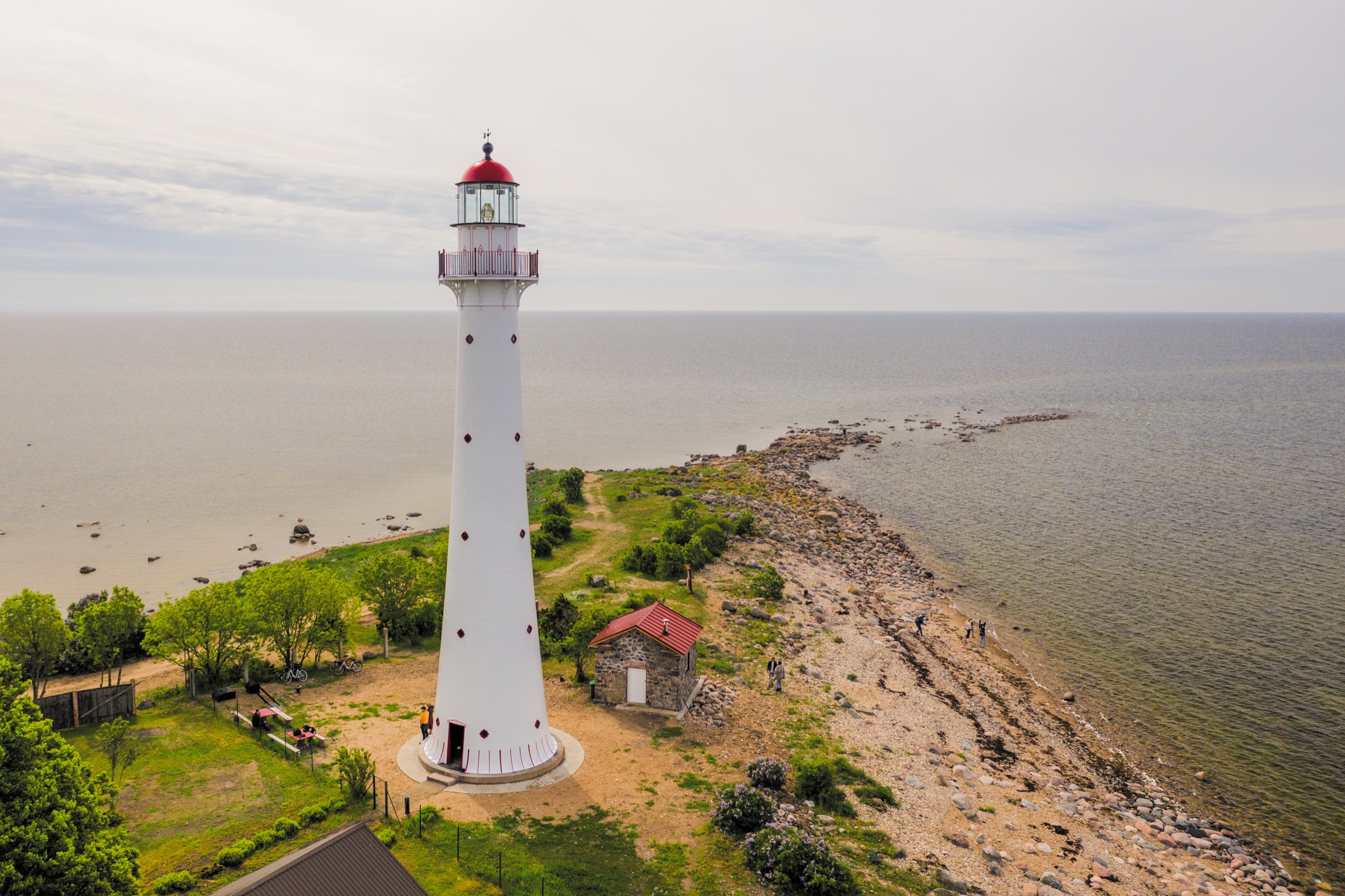
Kihnu – an ancient island of seafarers, fishermen, and seal hunters . Kihnu Island was first mentioned under the name Kyne in 1386, and its residents were first mentioned in 1518. Historical evidence suggests that fishermen and seal hunters had already visited Kihnu as far back as 3,000 years ago.
Historically, the men of Kihnu have spent much of their time at sea, having thus left the women in charge of the island’s affairs. As a result, the women of Kihnu have become the guardians and bearers of the island’s cultural traditions, such as handicrafts, dances, games, and music. The homemade Kihnu folk costume skirt, known as a ‘kört’ in the local dialect, remains a part of their daily attire.
Due to the island’s seclusion, Kihnu’s culture and centuries-old traditions remain alive to this day and the wisdom of the ancestors is still followed in everyday life. For example, the ceremonies related to marriage, such as the three-day wedding celebration, have remained unchanged, as well as many other customs and rituals that are followed on folk and church calendar holidays.
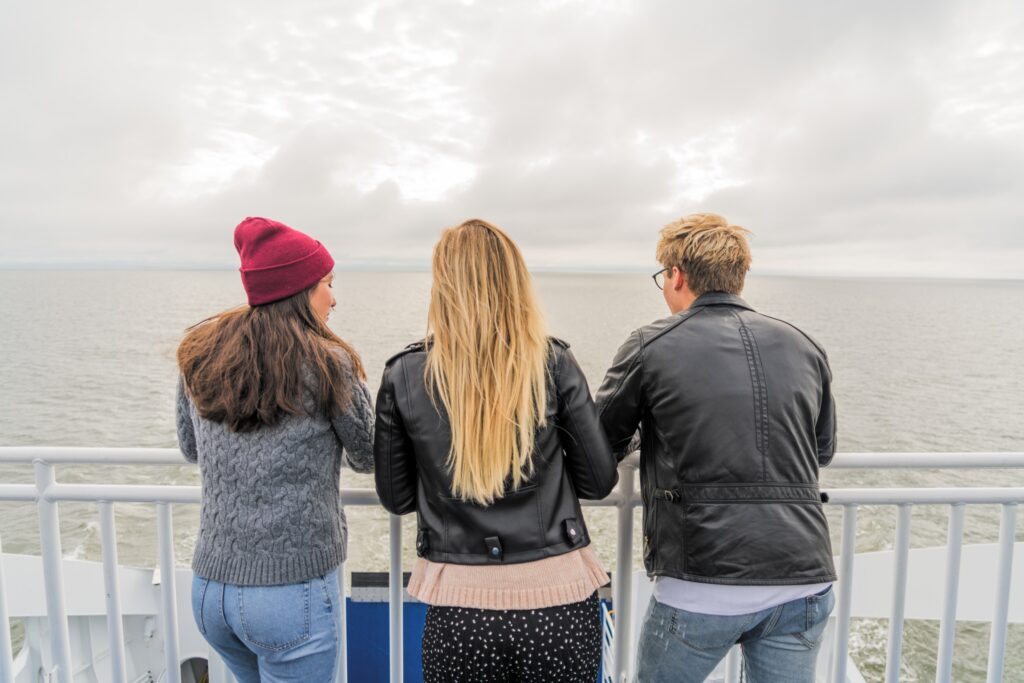
Kihnu Travel Wheel
So that visitors could comfortably discover the island, the route “ Kihnu Travel Wheel “ has been put together, joining all sights of the island into one circular tour. The route is nearly 23 km long and can be completed on foot, by bicycle and by car. It takes 4–12 hours to complete the route by bicycle, depending on one’s physical form and the objectives of the trip.
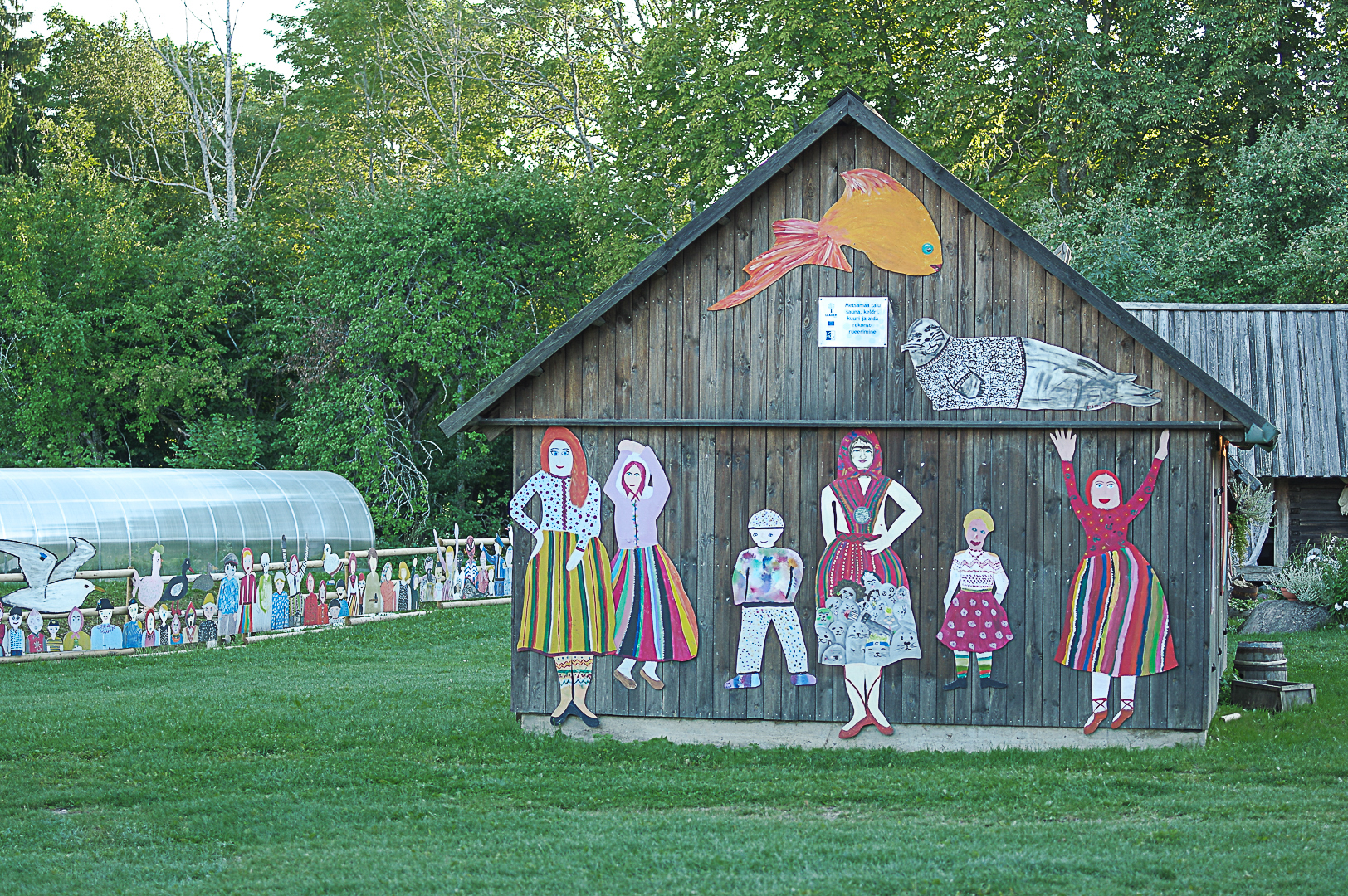
How to get to Kihnu island?
Kihnu Island can be accessed year-round via the ferry Kihnu Virve, which departs 3–4 times daily from the Munalaid Harbour (approx. 40 km from Pärnu). Ferry tickets can be purchased on the website Kihnu Veeteed and as there are various events continuously taking place on the island, you should always book tickets in advance . When tickets are sold out or you would like to have an even more exciting cruise, you can also find special-order water transportation for Kihnu. See more at Visit Kihnu .
You can go on the ferry to Kihnu by car, motorcycle and bicycle. We recommend leaving your car in the secured parking lot at Munalaid Harbour. The most convenient way to travel around Kihnu island is by bicycle , which can be rented from the Port of Kihnu. You can easily cover the entire island by bicycle. Also, it is a fun and athletic way to spend time with your friends and family.
Kihnu Island is full of smaller bed and breakfasts, with a few tourist farms and guest houses mixed in. There are two small grocery stores on the island, and a couple of smaller eateries that may not be open every day. At most bed and breakfasts, the families will offer food to their guests.
There are no ATMs on Kihnu Island, which means that you should bring along plenty of cash. Card payment option may not be available everywhere.
There are four villages on Kihnu Island:
- Sääre Village
In Lemsi in the east, there is a main port for traffic between the mainland and the island during the navigation season. In Linaküla in the western part of the island, there are a hospital, a school house, a local history museum, a church and a new public house that also accommodates the library and the rural municipality government. Sääre Village is located in the northern and middle part of the island and has a post office, shops and the Kurase centre. In the southern part of Kihnu, in Rootsiküla, there are a memorial stone, a weather station and a lighthouse.
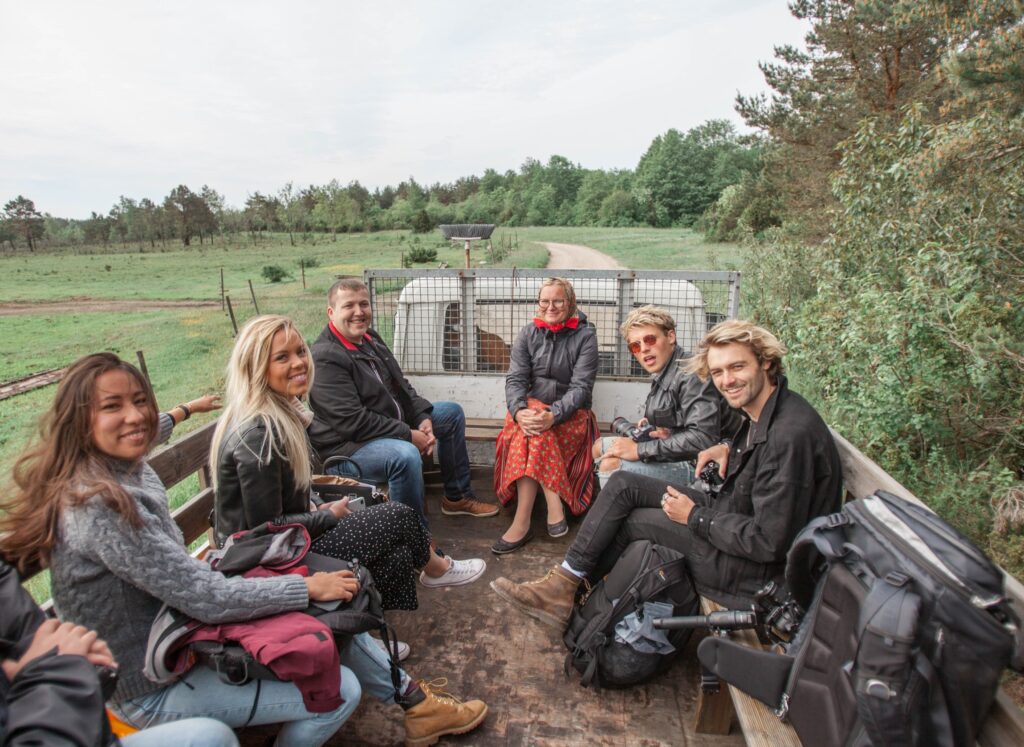
Kihnu objects
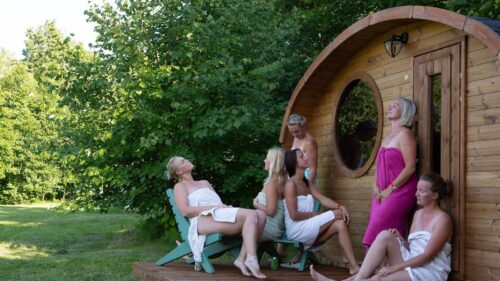
B&B Nuki Farm
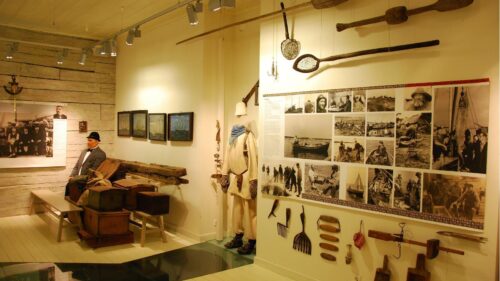
Kihnu Museum
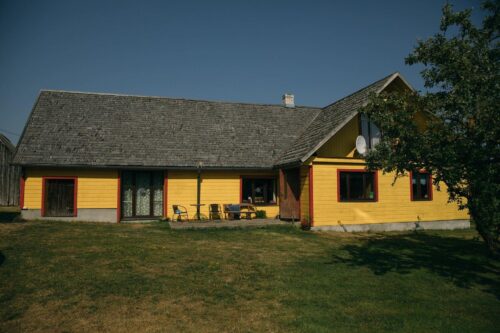
Mare accommodation in Uiõ-Matu farm
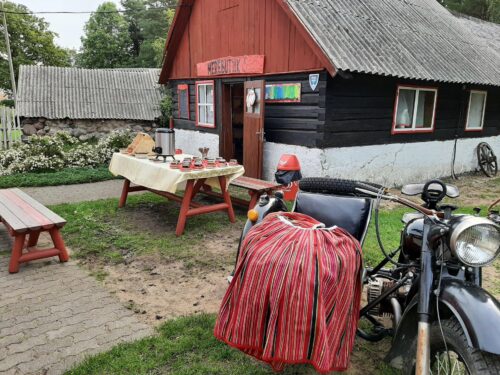
Kihnu's own handicraft shop
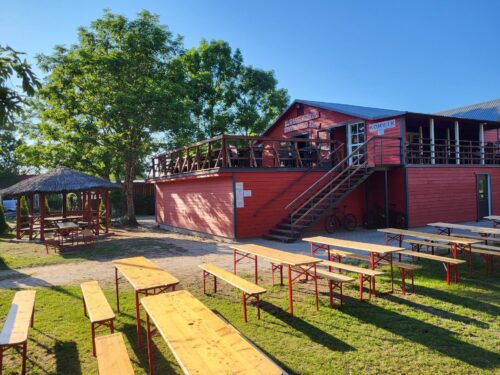
Kurase Café on the Kihnu island
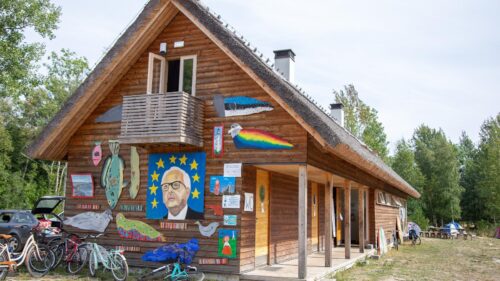
Metsamaa Traditional Farm on Kihnu Island
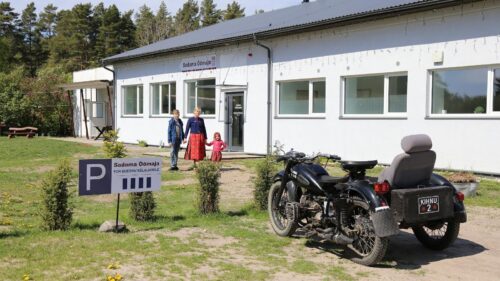
Sadama guesthouse in Kihnu – open 365 days a year
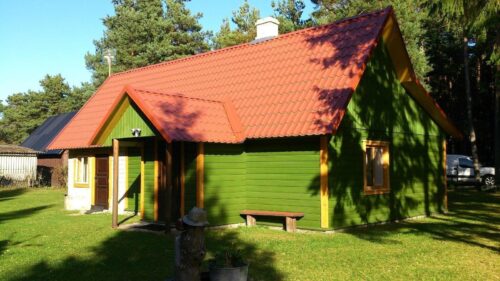
Niine Lodging
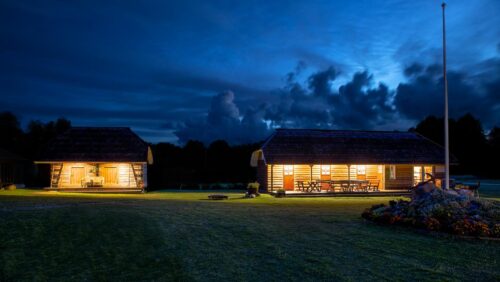
Pärnamõisa accommodation in Kihnu
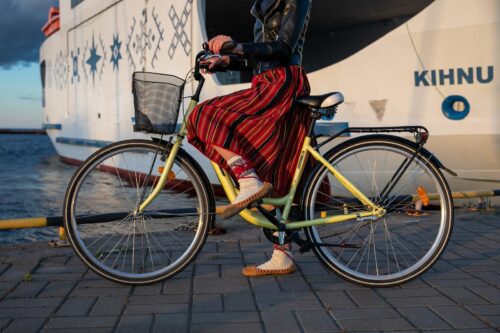
Pärnamõisa bicycle rental in the Port of Kihnu
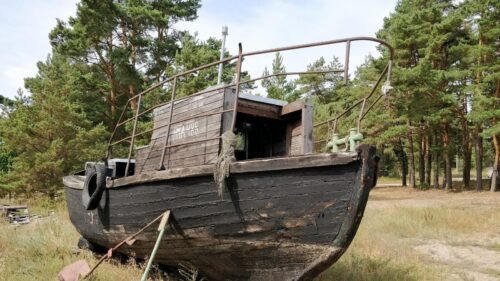
Kihnu Fishermen’s Harbour and historic Kihnu fishing boats
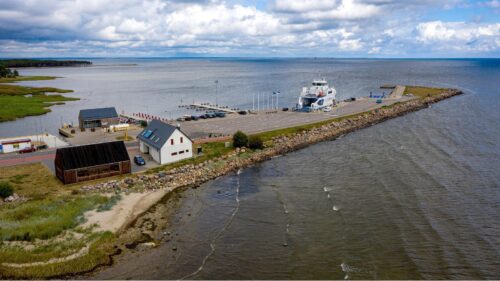
Kihnu Suaru Harbour
- +372 5330 4134 (Mon-Fri 8am-5pm)
- [email protected]
Follow us on social media:

Pärnu tourism information
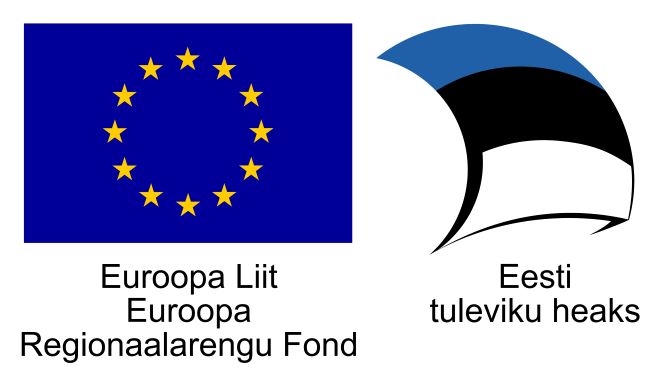
The web portal has been developed within the framework of the project “Pärnu County Business Development Activities – Tourism 2017-2019” funded by the ERDF action “Regional initiatives for promoting employment and entrepreneurship” for the period 2017-2023.
Accessibility
For tourism sector, for meetings, for travellers, dining and accommodation, useful information.
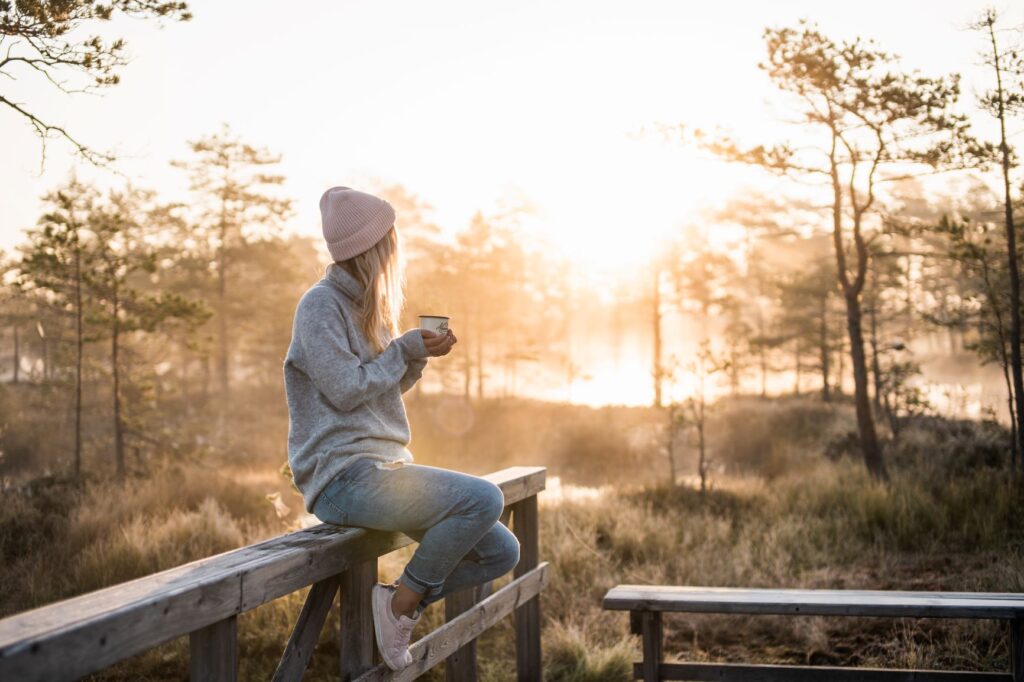
Visit Pärnu uudiskiri aitab sul veeta oma järgmise puhkuse Pärnus!
- 2.1 Climate
- 3.1 By ferry
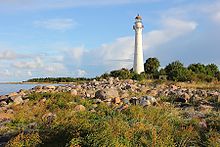
Kihnu is the largest island in the Gulf of Riga and one of the smallest municipalities in Estonia .
Villages [ edit ]
Understand [ edit ].
Kihnu is located south east from Saaremaa Island and west from the mainland.
For many years, the men of Kihnu have frequently gone to sea while the women ran the island and became the guardians of the island's cultural heritage, which includes handicrafts, dances, games and music. Unlike men, they also wear their national costumes in everyday life. So it's quite normal to see an old woman dressed in traditional clothing driving a motorbike or even a tractor.
UNESCO proclaimed Kihnu's cultural space and traditions as a Masterpiece of the Oral and Intangible Heritage of Humanity on November 7, 2003.
Climate [ edit ]
Because of the surrounding sea, the climate on the island is gentle and warmer than the Estonian average.
Get in [ edit ]
By ferry [ edit ].
Kihnu Island is connected by a frequent ferry service to Munalaid and Pärnu on the mainland. The ferries also carry cars. Bookings can be made via phone or internet .
See [ edit ]
- Kihnu Museum , ☏ +372 58188094 . May-Aug daily 10-17:00, Sep Tu-Sa 10-14:00, Oct-Apr Tu-F 10-14:00 . It hosts exhibits about the history of the island, the life and times of famous local captain, Kihnu Jõnn, and a collection of paintings by the renowned artist, Jaan Oad. Across the road from the museum you'll find the Kihnu Orthodox church and cemetery. €3 . ( updated May 2016 )
Do [ edit ]
Try to visit Kihnu during traditional celebrations of popular calendar or church holidays like Christmas, Midsummer's day and St. Catherine's Day, where you can witness genuine old traditions.
It's a good location for walking, fishing and bicycling (bikes can be rented on the island).
Buy [ edit ]
- [dead link] Kurase kauplus , Sääre village . 10-18 . Grocery store. ( updated May 2016 )
- Kihnu pood , Sääre village , ☏ +3725626 2181 , [email protected] . 09:30-18:00 . Grocery store. Fresh food from Pärnu arrives on Mondays and Fridays. ( updated May 2016 )
- Kallase pood , Lemsi village , ☏ +372446 9908 , [email protected] . Grocery store. ( updated May 2016 )
Eat [ edit ]
The island doesn't have an all year round open dining place. From September to May, catering is on request. There is no ATM on the island, but in most of the stores and catering establishments are able to pay by bank card.
- [dead link] Kurase kohvik , Sääre village . Open only during summer. ( updated May 2016 )
- [formerly dead link] Kihnu Küek , Männi Talu, Linaküla Kihnu vald . Home-restaurant; booking in advance. ( updated May 2016 )
Drink [ edit ]
- [dead link] Kurase baar , Sääre village . Open only during summer. ( updated May 2016 )
Sleep [ edit ]
- Ruudu külaliskorterid , Lemsi , ☏ +372 5144610 , [email protected] . €20 . ( updated May 2016 )
- Kuraga kodumajutus , Kuraga talu, Rootsi küla , ☏ +372 5291492 , [email protected] . +Bicycle rent. €40 . ( updated May 2016 )
- Sadama öömaja , Rannametsa talu, Linaküla , ☏ +372 5137099 , [email protected] . Sauna (€20/h); Bicycle rent; Fishing trip (€85). €23 . ( updated May 2016 )
- Ranniku majutus , ☏ +372 5071453 , [email protected] . €20 . ( updated May 2016 )
- Rock City , ☏ +372 56262181 , [email protected] . Tavern; Sauna;... €15 . ( updated May 2016 )
- Kihnuranna puhkeküla , Sääre küla , ☏ +372 5255172 , [email protected] . Sauna; Bicycle rent; Fishing trip; €15 . ( updated May 2016 )
- Tolli Turismitalu , Sääre küla , ☏ +372 5277380 , [email protected] . €20 . ( updated May 2016 )
- Kastani majutus , Kastani talu, Linaküla küla , ☏ +372 56500524 , [email protected] . Sauna; Bicycle rent; Free WiFi. €18 . ( updated May 2016 )
- Pihlaka kodumajutus , Pihlaka, Linaküla , ☏ +372 5288258 , [email protected] . Sauna; Grill; Bicycle rent; Fishing trip; Car tour. €16 . ( updated May 2016 )
- Nuki kodumajutus , Nuki talu, Sääre küla , ☏ +372 56985216 , [email protected] . Bicycle rent. €20 . ( updated May 2016 )
- Uibu talu kodumajutus , ☏ +372 5138557 , [email protected] . ( updated May 2016 )
- Niine majutus , ☏ +372 5241754 , [email protected] . ( updated May 2016 )
- Hiie kodumajutus , ☏ +372 56190370 . ( updated May 2016 )
Go next [ edit ]
- Saaremaa – The largest Estonian and wild seaside character island with castles and fortresses, one perfectly preserved, a beach, a spa and famous mills. Saaremaa is even sometimes called Sparemaa . Furthermore, the island itself is surrounded by a myriad of tiny islands including Abruka with its nudist camps.
- Hiiumaa – The second largest Estonian island. Popular for its lighthouses, ancient churches, historical values and the sense of humour of its inhabitants, but scarcely populated. In winter, it can sometimes be reached by car via an ice bridge on the Baltic Sea.
- Vormsi – The fourth largest Estonian island, very close to the mainland. Vormsi is a small island covered with forests and a Swedish community. A unique blend of Soviet and Swedish history mixed with unspoilt nature.
- Pärnu – Estonia's 4th largest city and the summer capital of Estonia, popular for its balneo-therapy complexes and spa centres, surrounded by numerous beaches.
- Ruhnu – The communal territory corresponds to that of the homonymous island, formerly known as Runö.
- Has custom banner
- Has map markers
- Do listing with no coordinates
- Buy listing with no coordinates
- Articles with dead external links
- Eat listing with no coordinates
- Articles with formerly dead external links
- Drink listing with no coordinates
- Sleep listing with no coordinates
- Outline cities
- Outline articles
- City articles
- West Estonia and Islands
- All destination articles
- Has Geo parameter
- Pages with maps
Navigation menu

Important events 2024
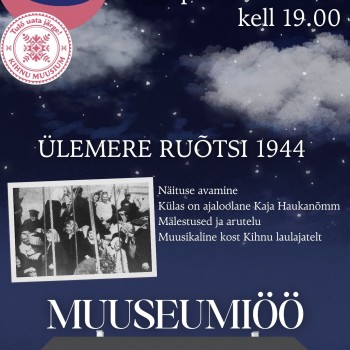
Night at the museum
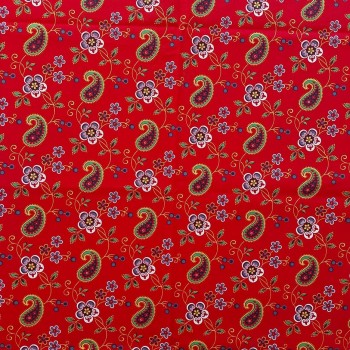
Chintz ride
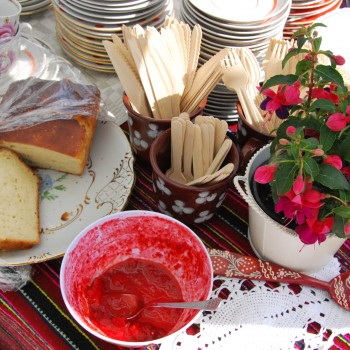
Kihnu cafe days, June 1-2
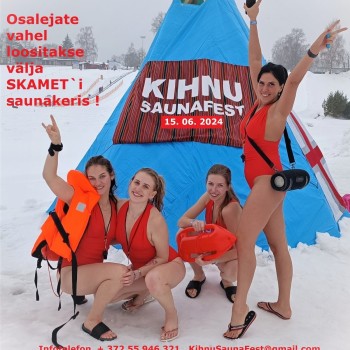

Kihnu SaunaFest
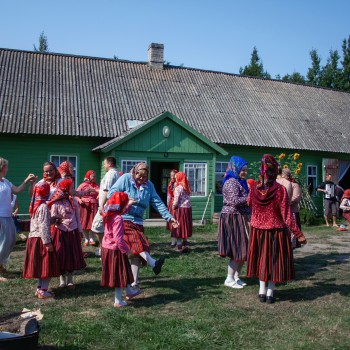
Family day at Metsamaa
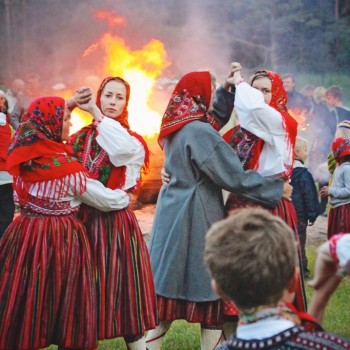
Midsummer's eve bonfire
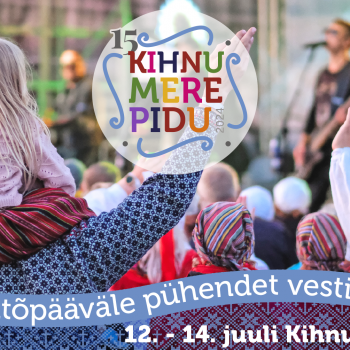
Kihnu sea festival July 12-14
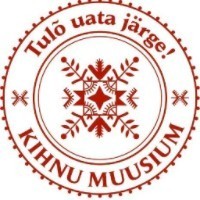
Kihnu museum 50th birthday
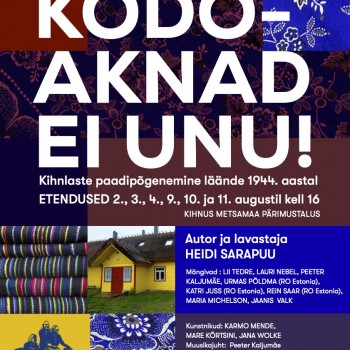
Summer theatre - "The windows of home do not forget"
- Visit Estonia
- Visitparnu.com
- Romantic Coastline
- Kihnu Cultural Space
- Kihnu Veeteed
- Rural Tourism
- Cultural heritages
National Geographic content straight to your inbox—sign up for our popular newsletters here

A group of women give a folklore presentation to Thai tourists. Kihnu's ancient, unique culture—largely preserved by women—attracts tourists from Estonia and abroad.
On this matriarchal European island, ancient customs thrive
The women of Kihnu, Estonia, have kept unique traditions alive for millennia. Now tourism is stepping in.
A four-hour ferry ride off the coast of Estonia , the sunlit conifers and coastal meadows of Kihnu Island rise gently from the Baltic Sea. You can bike from one end to the other in half an hour. Its four villages house around 700 people—only two thirds of whom live there year-round—and there is no hotel. Yet the island receives 12 times more tourists per resident than some of the most visited places in the world .

These tens of thousands of visitors don’t come for landmarks or amusement parks. Instead, they’re here to experience the unique culture of a place often touted as Europe’s last matriarchal society.
“Kihnu women have a very important role: to keep the cultural traditions,” says Mare Mätas, president of the Kihnu Cultural Space Foundation and a driving force in many community projects. “They are taking care of the human life [cycle].”
Historically, Kihnu’s men left the island for weeks or months at a time, to hunt seals and fish and, later, to crew ships on international voyages. In their absence, women became the ones who tended farms, governed, and maintained traditions—traditions which have survived both time and turmoil.
Checkered past
Over the centuries, Estonia has been invaded by Vikings , Germans , Swedes , Poles , and Russians . Its cultural survival was in question for much of the 20th century, when Soviet occupation, Nazi invasion, and Soviet reoccupation depleted the population, then pressed foreign cultural practices on those Estonians who remained. And while elements of its many invaders’ cultures became part of the country’s regional folklife, remote Kihnu has retained the vibrancy of its singular dialect, songs, dance, and weaving techniques.

Tourists relax during the Mere Pidu festival, which takes place the second weekend in July. Festival games range from the universal (think tug-of-war) to the distinctly local—like contests of strength involving throwing rocks or rubber boots or carrying women.

Elvi Vesik waits for a dentist appointment. Though the island now has a doctor or nurse at all times, residents must go to the mainland or wait for a visit from specialists like dentists, hairdressers, police officers, and priests.

Ninety-year-old Virve Elfriede Köster is a traditional musician whose folk songs—including over 250 of her own composition—are heard worldwide .
After the fall of the U.S.S.R., the island’s fishing and agriculture declined , and tourism became the main economic force—though not a positive one at first. Tourists gained a reputation as rude drunks come to take advantage of the freedom on an island without a permanent police force.
“People were like wild animals [that] got loose,” says Ingvar Saare, mayor of Kihnu since his 2009 election at the age of 23. (Kihnu’s nine-member town council is usually half or majority female; Saare’s predecessor, Annely Akkerman, was later a member of parliament.)
In the early 2000s, islanders’ attitude began to shift. A plan to attract cultural tourists saw quick results, providing a willing audience for folk performances as well as an income for islanders who sell handicrafts or food, or rent lodging or bicycles. By 2002, about 40 percent of Kihnu residents depended to some extent on tourism. And in 2008, Kihnu’s full recognition as a UNESCO intangible cultural heritage began to entice more international visitors, especially from Japan and Germany.

- Nat Geo Expeditions
“When you’re on the island, you take it for granted that life is like that; you don’t see the value in the way we are living,” says Saare. “But [then] you have 30,000 tourists coming to the island every year and saying, wow, it’s great, what you’re doing here!”
Delicate balance
Some see a danger in commoditizing deeply held traditions, so closely linked to individual and collective identity, but Saare sees a way to keep the island alive.
“Quite often the debate is going on that we’re just going to change into a museum, and just wear the traditional skirts for money, and so on,” he says. “But people don’t do it for money.”

Though islanders own cars, and visitors can bring cars across by ferry, Kihnu's wheeled traffic is more often bikes—or Soviet-era motorcyles and sidecars popular with tourists, especially Germans interested in the machines' vintage German engineering.
Life on Kihnu isn’t cheap: Most supplies have to be shipped in, and the island receives more state subsidies than most other rural villages in Estonia. Islanders tend to try to earn as much as possible from visitors during the summer, when the ferry is able to run, in order to help support their families during the deserted winters as well.
But Saare and Mätas describe locals whose passion for keeping their culture alive isn’t motivated by cash for cash’s own sake. Rather, tourism money improves infrastructure and quality of life on Kihnu—hopefully convincing families to remain there. The population hasn’t recovered from the loss of families who fled in the 1940s and never returned; young men still go to Sweden, Finland , or Norway to find work in shipping or construction. Many residents only live on the island part-time: youth attend schools on the mainland, and adults often have jobs in Tallinn , the capital, or Pärnu, the closest mainland town.

Kihnu only has two small apartment buildings. All other homes—including the bed-and-breakfasts where visitors stay, as there are no hotels—are traditional, Scandinavian-style wooden houses.

Õie Vesik wields a traditional sickle to cut the grass in her backyard. Though agriculture has declined, small farms are still active, and there are efforts to preserve their traditional cultivation both for residents' sustenance and for tourists' interest.
“We have lots of problems because if the young families leave for economic reasons … we won’t have children anymore in our school in the future,” says Mätas, describing the issue as her “biggest problem.”
Efforts have even been made to build more modern houses for mainland families to move into and see if they want to join the community. “It’s one option, and we must try everything,” Mätas says, though there are also fears that the island would become an empty collection of summer houses for wealthy Estonians if local families continue to move away.
Tourism may seem like a magic bullet: its job opportunities give islanders financial reason to stay, and its focus on culture as the main attraction supports the community’s ability to keep those traditions alive and thriving. But unchecked growth may have negative downstream consequences. Kihnu has less than 300 places for tourists to stay, B & B-style; more development would compromise both villages and the environment , swinging the island out of its current precarious equilibrium.
For now, though, tourists are more than welcome .
“Thank God people like to visit islands,” Saare says. “Thank God we are an island.”
Getting there

Two ferries connect Kihnu to the mainland; this one, which links to Pärnu, the closest mainland town, runs twice a day throughout the year and four times a day during the summer tourist season. Before a new ferry launched in 2015, it wasn't uncommon for poor weather to trap visitors on the island for days or weeks.
From June to August, weather permitting, Kihnu’s highly anticipated new ferry makes the one-hour trip four times a day between the mainland and Kihnu (though a 15-minute flight can land on Kihnu, if you’re prone to seasickness), making it a four-hour trip all told from Tallinn. Mätas recommends checking the calendar of cultural events to plan a trip around a festival or performance—and plan it well in advance, as limited lodging capacity goes quickly when mainland Estonians take their own vacations.
Winter trips are theoretically possible, for the brave: Only about five lodgings are available past September, when it gets dark at 4 p.m. and the sea ice shuts down the ferry.
The nature of island life includes temperamental transportation and occasional shortages, but with a bit of pre-planning, a trip to Kihnu is plenty rewarding for those looking for a charming, quiet atmosphere, beautiful nature, and fascinating culture.
“If people just want to be in the modern hotel and go to the lobby bar, this kind of thing we don’t have here,” says Mätas. “Come if you’re interested in folk culture ... [people] just want to be in the middle of nature and have that small island feeling, the light and the quiet.”

A view from Kihnu's 153-year-old lighthouse, a main tourist attraction, overlooks the island's southern shores. "We can’t understand how it’s possible to live in a town," says Mätas. "It’s very different, comparing the culture on the mainland, how other people behave and think, so you’re always homesick."
Related Topics
- CULTURAL TOURISM
- TRAVEL PHOTOGRAPHY
- PHOTOGRAPHY
- SUSTAINABLE TOURISM
You May Also Like

Looking for a truly remote, off-the-grid adventure? Try Panama.

10 of the best UK destinations for spring travel
For hungry minds.

10 whimsical ways to experience Scotland

The essential guide to visiting Scotland

10 of the best hotels in Vienna, from film-star boltholes to baroque beauties

How to explore Grenada, from rum distilleries to rainforests

20 of the coolest travel adventures for 2024
- Environment
- Perpetual Planet
History & Culture
- History & Culture
- History Magazine
- Mind, Body, Wonder
- Paid Content
- Terms of Use
- Privacy Policy
- Your US State Privacy Rights
- Children's Online Privacy Policy
- Interest-Based Ads
- About Nielsen Measurement
- Do Not Sell or Share My Personal Information
- Nat Geo Home
- Attend a Live Event
- Book a Trip
- Inspire Your Kids
- Shop Nat Geo
- Visit the D.C. Museum
- Learn About Our Impact
- Support Our Mission
- Advertise With Us
- Customer Service
- Renew Subscription
- Manage Your Subscription
- Work at Nat Geo
- Sign Up for Our Newsletters
- Contribute to Protect the Planet
Copyright © 1996-2015 National Geographic Society Copyright © 2015-2024 National Geographic Partners, LLC. All rights reserved
- For visitors For travel trade For media For digital nomads
- Eesti keeles
- Auf Deutsch
- FONT SIZE: A A A
- Map of Estonia
visit estonia
- All categories
- Nature & Wildlife
- Food, drink & nightlife
- History & Culture
- Accommodation
- Activities & Adventure
- Health & Wellness
- Bicycle routes
- Tourist information centres
- Seminar rooms
- Special offers and packages
City or region:
- Throughout Estonia
- North Estonia
- South Estonia
- West Estonia
- Cool facts about Estonia
- Estonian history & culture
- Travel information

- Food & Drink & Nightlife
- History & culture

- Nature sites
- Hiking & nature tours
- National parks
- Parks & gardens
- Zoos & farms
- Bird-watching
- Horseback riding
- Estonian cuisine
- Culinary experience
- Restaurants
- Bars & pubs
- Nightclubs & parties
- Medical spas
- Museums & galleries
- Architecture
- Castles & manors
- Lighthouses
- Arts and crafts workshops
- Water sports & leisure
- Sail in Estonia
- Cycling routes in Estonia
- Sports & games
- Adrenaline rush
- Winter adventures
- Local design & boutiques
- Handicraft & souvenirs
- Shopping centres
- For caravan traveler
- Green & sustainable
- Tallinn, the capital

- Travel here & around
- Travel to and around Estonia: FAQs
- Travel to Estonia
- Travel around Estonia
- Why Estonia
- See tours around Estonia
- #EstonianWay
Sadama guesthouse in Kihnu – open 365 days a year
SUITSUTSEHHI, Lemsi küla, Kihnu vald, Pärnu maakond
- [email protected]
- (+372) 513 7099
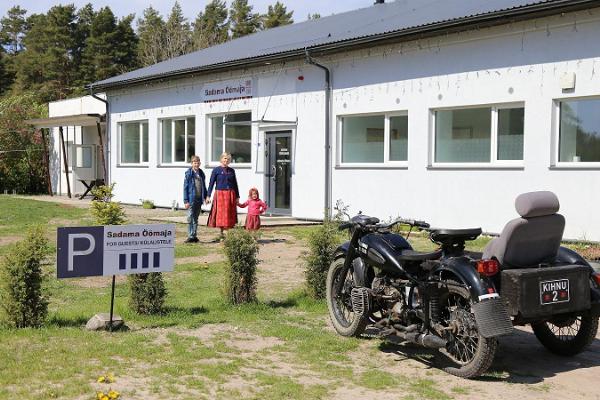
Sadama guesthouse in Kihnu offers cosy accommodation for different kinds of travellers all year round: it welcomes foreigners, families, and culture and nature enthusiasts. We offer 1–4-person rooms with single beds. Guests can use a shared kitchen, a shower, a sauna, a dining room, and a grilling area. In the yard, you will find a sitting area with a thatched roof, a children’s playground, and a sandbox. There is also a cosy play area for your youngest children. We also offer catering (if ordered in advance), excursions , guide services, handicraft workshops, fishing trips with a local fisherman, and bike rental.
Times and prices
Is open advance bookings only
Single room:
Double/Twin room:
Accommodation price 1 night:
Accommodation price 1 week:
Price of whole house/building:
Price per child:
- SHOW ALL PRICES
Exact price to be clarified by service provider.
Features and amenities
- Pets allowed
Food and drinks
Wheelchair access
- Upon presentation of ISIC card
- Upon presentation of ITIC card
- Wheelchair accessible
- Children's playroom
- Activities for children
- Recreation room
- TV in recreation room
- Seminar room
- Washing machine
- Outdoor terrace
- Free parking
- Airing cupboard/space
- Fenced territory
- Recreation area/picnic ground
Additional services
- Bike rental
Room amenities
- Internet (WiFi)
- Allergy-Free Room
- Shared toilet
- Shared facilities
- Extra bed available
Number of rooms
- Breakfast for additional fee
- Meals available if booked in advance
- Transfer service
- Kitchen available
Free time and relaxation
- Kids' playground
- Barbecue area
- Landscaped area
Seminar and conference
- Presentation equipment
Getting there
When coming from the port, the road will branch into two. Take the direction to the right and follow the signs for ‘Sadama öömaja’. Walk 200 metres further and you will see us on your right.
- Sealed access road
- By excursion bus
Coordinates
- 58°8'29''N 24°0'39''E
- Download GPX file
Check out other services offered by this provider
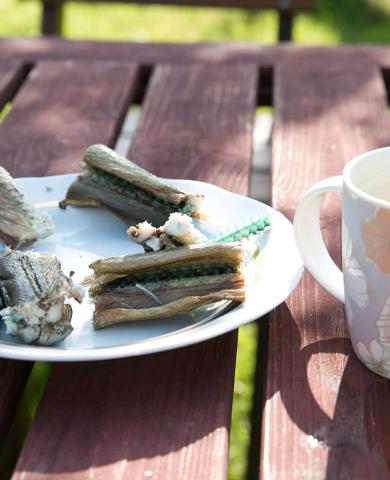
Kohalik amps – freshly smoked fish from a local fisherman in Kihnu
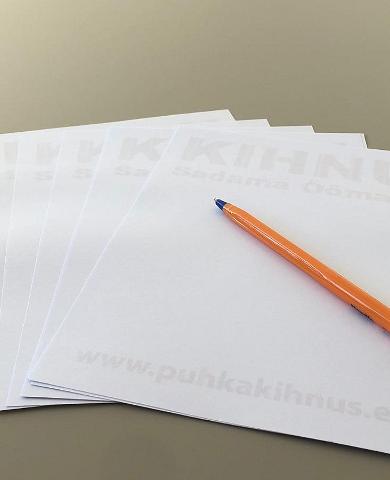
Kihnu Harbour Öömaja guesthouse, seminar room
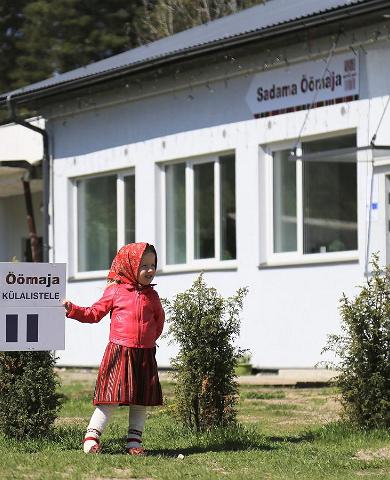
Sadama Guesthouse bike hire on Kihnu
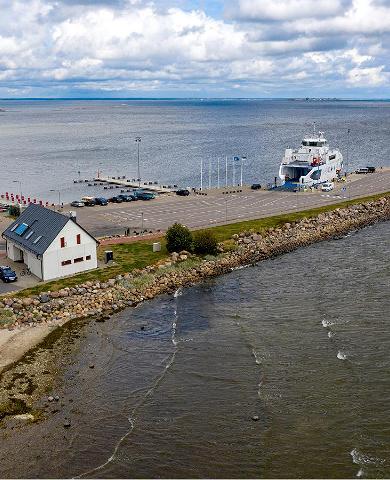
Kihnu Suaru Harbour
Places nearby.
Our site is also available in Chinese and you will be redirected to Visit Estonia Chinese website visitestonia.cn
爱沙尼亚旅游局中文官方网站现已上线,即将跳转至中文官网visitestonia.cn
- Yes, redirect me / 前往中文官网
- No, stay here / 停留在本网站

IMAGES
VIDEO
COMMENTS
The island of Kihnu is definitely worth visiting. Kihnu kultuurituurid! Waterborne: Munalaid-Kihnu and Kihnu-Munalaid. Culinary experiences at Kihnu Gurmee... OÜ Kihnu Puukoi. Kihnu Cultural Space was included in UNESCO's list. Bicycle rental @ Kihnu harbour! VISIT US 365 DAYS A YEAR!
Kihnu island. The seventh-largest island in Estonia, Kihnu is an ancient island of seafarers and fishermen. The cultural heritage of Kihnu - the clothing, language music, and handcrafts are all on the UNESCO Intangible Cultural Heritage List. The island of Kihnu is home to a close-knit community of about 700 inhabitants, who value old ...
29.03.2024 Visit Kihnu. ... Kihnu gets praised all the time View media coverage about Kihnu. Visit Estonia; Visitparnu.com; Romantic Coastline; Kihnu Cultural Space; Kihnu Veeteed; Rural Tourism; Cultural heritages; Contact information. Kihnu Municipality Linaküla 88003, Pärnumaa +372 446 9910
Estonia's Isle of Women. Europe's last surviving matriarchy. The island run by women. Headlines hint at Kihnu Island's reputation, but they're not exactly correct. As fishermen, Kihnu men typically spent months out at sea. Kihnu women stayed behind and out of necessity, bore tremendous responsibility for day-to-day life. They still do.
One way Kihnu-Munalaiu-Kihnu: 80€. Main destinations are KIHNU and RUHNU but also possible to visit Kihnu's surrounding islets. Other transportation within the Gulf of Livonia is possible upon request 24/7. Information and booking: Olavi +372 508 2467 (est, eng, rus, fin) or write to [email protected].
Kihnu is the seventh-largest island in Estonia. The cultural heritage of Kihnu such as its clothes, dialect, music, and handicrafts belong in the UNESCO list of intangible cultural heritage.Kihnu Museum represents this in the most genuine way. Kihnu is an ideal place for walking, fishing, cycling, and meeting friendly islanders!
Visit Kihnu - Estonian island. Night at the museum - "At night there is movement"
Historic and modern Kihnu. Kihnu is the largest island in the Gulf of Riga and Estonia's seventh largest island. The area of the island is 16.9 km², and it is 7 km long and up to 3.3 km wide. The closest point on the mainland, the cape of Lao on Tõstamaa Peninsula, is located at a distance of 10.2 km from Kihnu, while the nearest inhabited ...
Kihnu Cultural Space was included in UNESCO's list of Masterpieces of Oral and Intangible Heritage of Humanity in November 2003. In 2008 it was inscribed on the Representative List of the Intangible Cultural Heritage of Humanity. Kihnu cultural space consists of Kihnu and neighbouring small island Manija. Its culture, communal lifestyle ...
The Estonian island of Kihnu is run by women. Virve Koster, 91, above, better known as "Kihnu Virve," is one of Estonia's top-selling female folk singers. Here, she takes a spin on a vintage ...
Kihnu is the largest island in the Gulf of Riga and the seventh largest island in Estonia. The island covers an area of 16.9 km², being 7 km long and 3.3 km wide. The closest point on the mainland is the cape of Lao, on the Tõstamaa Peninsula, which is 10.2 km from Kihnu. Kihnu is home to the unique traditional Kihnu culture, which has been ...
Try to visit Kihnu during traditional celebrations of popular calendar or church holidays like Christmas, Midsummer's day and St. Catherine's Day, where you can witness genuine old traditions. ... Pärnu - Estonia's 4th largest city and the summer capital of Estonia, popular for its balneo-therapy complexes and spa centres, surrounded by ...
Homepage. [email protected]. (+372) 581 88094. Facebook. See photos (11) You must go to the exciting Kihnu Museum when you visit the island. It like an anchor in preserving and introducing the cultural space of Kihnu, which has been entered in the UNESCO heritage list. The museum was founded in the former schoolhouse of Sääreküla Village in ...
Kihnu is an island in the Baltic Sea.With an area of 16.4 km 2 (6.3 sq mi), it is the largest island in the Gulf of Riga and the seventh largest island of Estonia.With a length of 7 km (4.3 mi) and width of 3.3 km (2.1 mi), the island's highest point is 8.9 metres (29.2 ft) above sea level. Kihnu falls into Pärnu County and together with neighbouring islands forms Kihnu Parish, one of the ...
Kihnu, the largest island in the Gulf of Riga, has many attractions that make this a hidden gem of the Baltic states. A quaint Eastern European village awaits you rich with Estonian culture. Kihnu ...
KIHNU TULETORN 840, Rootsiküla, Kihnu vald, Pärnu maakond. REQUEST INFORMATION View on map. Homepage. [email protected]. (+372) 564 93948. Facebook. See photos (7) Kihnu lighthouse is situated on the southernmost tip of Pitkänä peninsula. It was brought here in 1864 from England, dismounted, and was reassembled on site.
Visit Kihnu - Estonian island. Kihnu knitting festival April 26-28. 18.05
The women of Kihnu, Estonia, have kept unique traditions alive for millennia. ... Though the island now has a doctor or nurse at all times, residents must go to the mainland or wait for a visit ...
Kihnu. Kihnu, ikiaikainen merimiesten ja kalastajien saari, on Viron seitsemänneksi suurin saari. Kihnun omintakeinen kansallispuvuista, omasta murteesta, musiikista ja käsitöistä koostuva perinnekulttuuri myös eräs Unescon aineettoman perinneluetteloon helmiä. Kihnun saaressa on noin 700 asukasta, ja saaren verkkainen arki on hyvin ...
Home. Sadama guesthouse in Kihnu - open 365 days a year. SUITSUTSEHHI, Lemsi küla, Kihnu vald, Pärnu maakond. BOOK View on map. Homepage. [email protected]. (+372) 513 7099. Facebook.